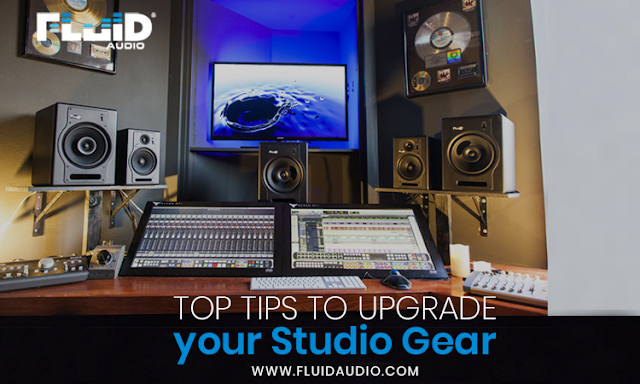Top Tips to Upgrade your Studio Gear
Whether you’re an aspiring musician, music engineer, or music producer, once you’ve jumped into the enchanting world of audio engineering, there’s no looking back. It consumes you totally! You’re busy cranking out sessions and your life is exciting, frustrating, rewarding, all rolled into one! Also, there’s a good chance that you suffer from some form of studio gear addiction. There is a perpetual desire to make that next gear purchase that sometimes transforms into an uncontrollable urge to purchase some “latest and greatest” gear available.
That said, any experienced music maker will endorse the fact that possessing just a few pieces of inexpensive but reliable equipment in your studio can be all you need to improve the sonic quality of your music. This good quality basic gear allows you to transfer those brilliant musical ideas from inside your head to the real world accurately.
However, if your current music rig seems to be inadequate, it may be a good idea to take a step back and scrutinize the equipment that you currently own, to identify potential shortcomings in your setup. It is vital that you examine whether there is any old or unreliable musical equipment in your setup which is pulling down the overall quality of your music. It is worth ensuring that you are not putting yourself at a technical disadvantage before you even begin your creative pursuits.
If you find that your present just isn’t cutting it, it is time for a few upgrades you can make to your setup to enhance the overall quality of your home-studio productions.
Professionally designed Studio Monitors
An accurate set of reference studio monitors is indispensable, and it can mean the difference between creating a fuzzy mix as opposed to one that accurately reproduces all the nuances and subtleties of your performances. If you find what your current mix is not translating well to your ears, it’s time to research the market for a new set of speakers. Fluid Audio offers a range of professional studio monitors meticulously built to deliver the most accurate and precise sound. They not only fit the bill in terms of their clarity and accurate sound reproduction, but their compact size also makes them the best studio monitors for a home-studio setup.
A Sturdy All-In-One Microphone
Every budget studio needs at least one hardworking and versatile microphone that takes care of all of your recording needs—vocals, guitars, drums, percussion, bass amps, etc. It is best to buy just one, a good quality microphone that’ll be able to handle all the tasks you throw at it while maintaining a clean sonic character.
A Superior Computer Audio Interface
If you’re using your computer to capture your sound and mix and edit your projects, a state-of-the-art audio interface with clean-sounding mic pre-amps is imperative to conserve the sonic integrity of your music. The flexible I/O (Ins and Outs) allows you to work in a highly efficient and ergonomic manner. If you’re in the market for a new interface that won’t break the bank, consider the SRI2 Audio Interface from Fluid Audio.
Headphones
It won’t do you any good to undermine the value of good quality headphones in a recording studio setup. As an essential piece of gear, they enable you to work silently without disturbing others around you and provide an alternate sound source to reference your mixes. They are absolutely mandatory if you want to record pristine, quiet vocals. When shopping for a new set, look for a closed-back pair that won’t leak sound to the outside, and make sure you find a model that feels comfortable for those long-haul recording sessions.
Don’t Rush when choosing the Right Gear
The amount of pro studio gear available out there is staggering, to say the least. When upgrading your setup, make sure you thoroughly research the items you’re interested in; visit the retailers, go online to read product reviews, enquire about the experiences of your friends and colleagues, and finally, choose the studio equipment that gives you the best bang for the buck without compromising the sound you’re looking to reproduce.



Comments
Post a Comment